The African wild dog, also known as Lycaon pictus, is a highly social and endangered carnivorous species found in sub-Saharan Africa. They are characterized by their unique coat pattern of blotches of black, brown, and white fur with large ears and long legs that make them agile hunters. Despite being apex predators themselves, they face numerous threats from other animals.
African wild dogs encounter various predators throughout their lives, including lions, hyenas, leopards, crocodiles, and humans. Predation accounts for nearly 50% of all mortalities among African wild dogs.
The study of the predation patterns on this species can provide insights into how these factors affect population dynamics and conservation efforts.
This article aims to explore the different predators that pose a threat to African wild dogs and how their interaction influences the survival of this fascinating species.
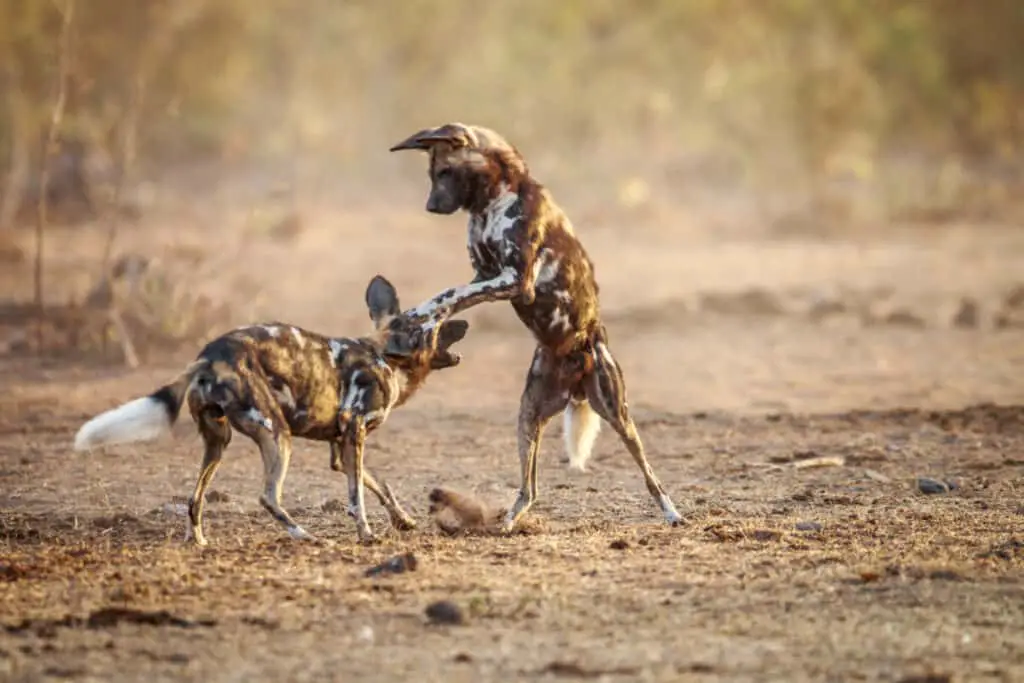
The Importance Of Understanding African Wild Dog Predation
The importance of understanding African wild dog predation lies in its ecological impact. As a top predator, the African wild dog plays a crucial role in maintaining balance within ecosystems. They help regulate herbivore populations and indirectly influence vegetation dynamics through their prey selection. Furthermore, they provide carrion for scavengers such as vultures and hyenas.
However, despite their ecological significance, African wild dogs face numerous threats from human activities such as habitat loss, hunting, and disease transmission from domesticated animals.
Understanding the factors that contribute to their predation can aid conservation efforts by identifying areas where protection is needed most. Additionally, studying their interactions with other predators can reveal insights into how different species coexist and compete for resources in complex ecosystems.
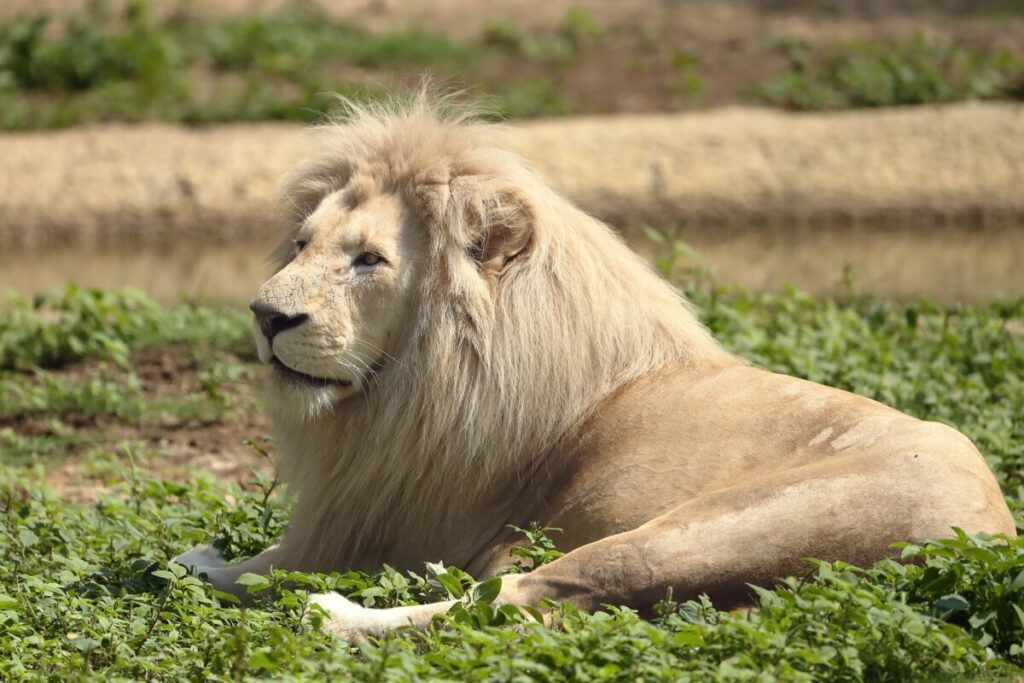
Lions
Understanding African wild dog predation is crucial for conservation efforts, as it can identify the threats to their survival and help implement effective strategies.
One of the top predators that pose a significant threat to these dogs are lions. Lions have been known to kill and eat African wild dogs, making them one of the biggest obstacles to their population growth.
Lions’ impact on African wild dogs goes beyond direct predation. Research has shown that when lions move into an area where African wild dogs reside, they alter the prey preferences of both species. This change in competition for food sources puts pressure on the already endangered populations of African wild dogs, making it harder for them to find suitable prey and survive.
Understanding this dynamic between two apex predators is critical in developing plans that protect not only African wild dogs but also other species that share similar habitats with them.
It’s worth noting that while lions are certainly a major threat, other factors such as habitat destruction and disease outbreaks also contribute to declining numbers of African wild dogs. Therefore, identifying all possible risks and addressing each accordingly is essential in ensuring the long-term survival of these unique animals.
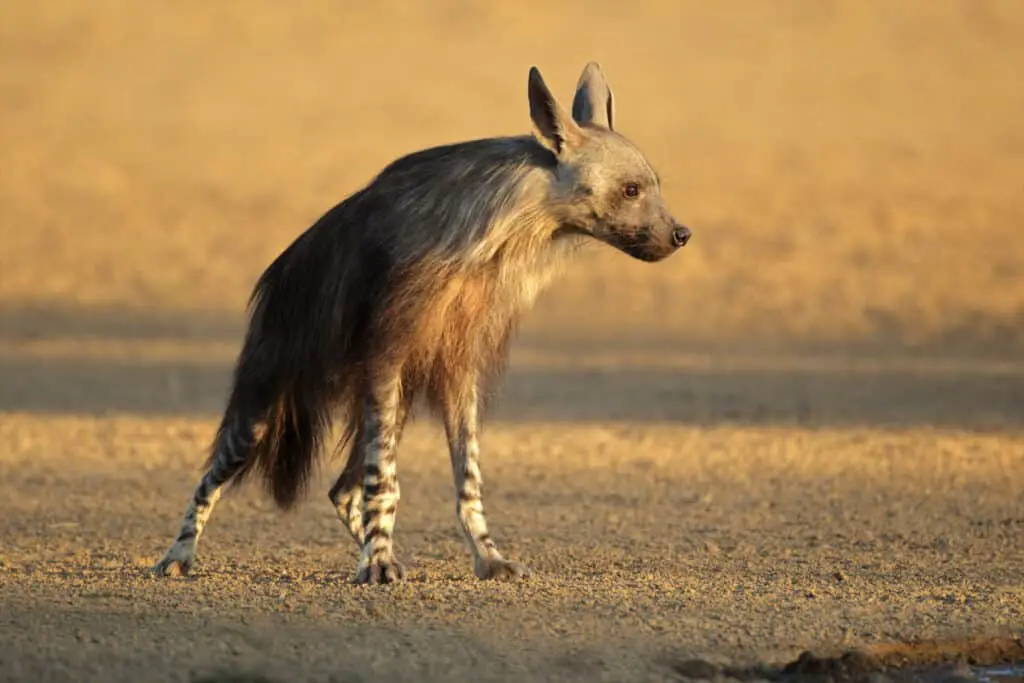
Hyenas
African wild dogs are social carnivores that live in packs, but they face a number of predators in the African savanna. One such predator is the hyena, which can be a formidable enemy to these smaller and more agile animals.
Understanding hyena behavior and hunting strategies is key to understanding their threat to wild dog populations.
Hyenas are known for their scavenging abilities, but they are also skilled hunters who have been observed taking down prey as large as wildebeest on their own. They typically hunt at night using stealth and teamwork to take down larger prey.
Hyenas also have a complex social structure that allows them to coordinate hunts effectively and defend territory against other predators. As such, they can pose a significant risk to wild dog packs if they encounter each other while hunting or competing for resources.
Conservation efforts aimed at mitigating hyena predation on wild dog populations include measures like habitat restoration and creating protected areas where both species can coexist without conflict.
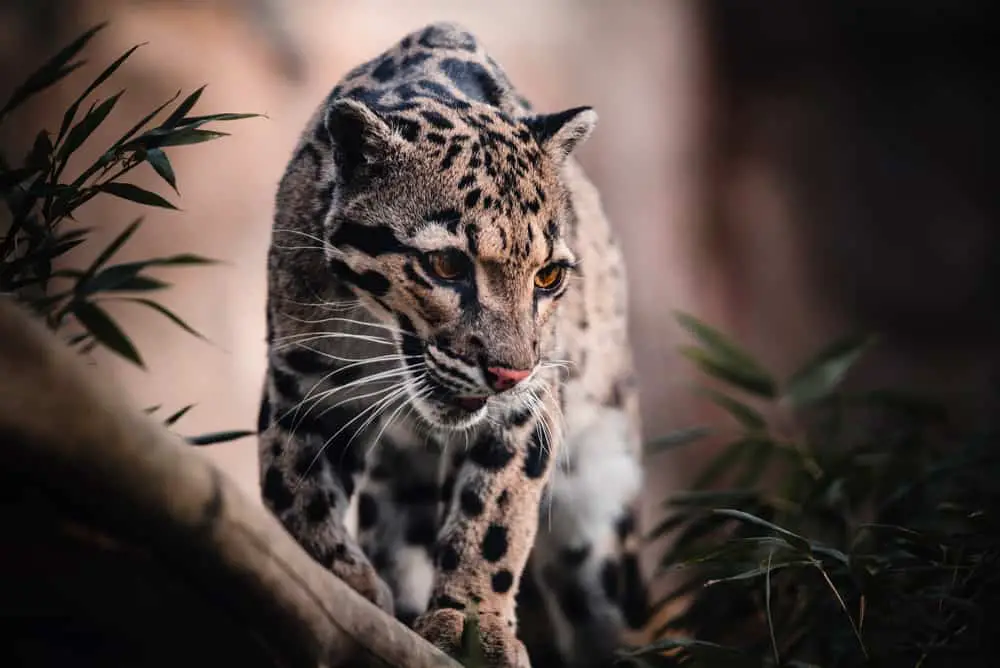
Leopards
Hyenas are not the only enemies of African wild dogs. Leopards, a stealthy predator, also pose a threat to these social canids. These big cats are known for their hunting prowess and ability to take down prey much larger than themselves.
Leopards often hunt at night but can be active during the day as well. They rely on their keen senses of hearing and sight to track their prey silently through the bushveld. Once they have located a potential target, leopards stalk it until they are within striking distance. Their powerful jaws and sharp claws make them formidable predators capable of killing animals weighing up to three times their own weight.
Although leopards’ natural range does not overlap with that of African wild dogs entirely, there is some overlap in certain areas such as savannas and woodlands where both species may compete for food resources.
Despite being solitary hunters, leopards have been known to work together occasionally when taking down large prey.
The leopard’s distinctive spots provide excellent camouflage in its natural habitat.
In addition to wild dogs, leopards prey on a variety of other animals including antelope, birds, rodents, and even fish.
Overall, while hyenas remain one of the most significant threats facing African wild dogs due to intense competition over limited resources like waterholes or carcasses left by other predators; leopards represent another danger because they possess exceptional hunting skills that enable them to bring down relatively large prey easily. Therefore African Wild Dogs must always be wary of these two cunning predators if they want to survive in Africa’s harsh wilderness environments.
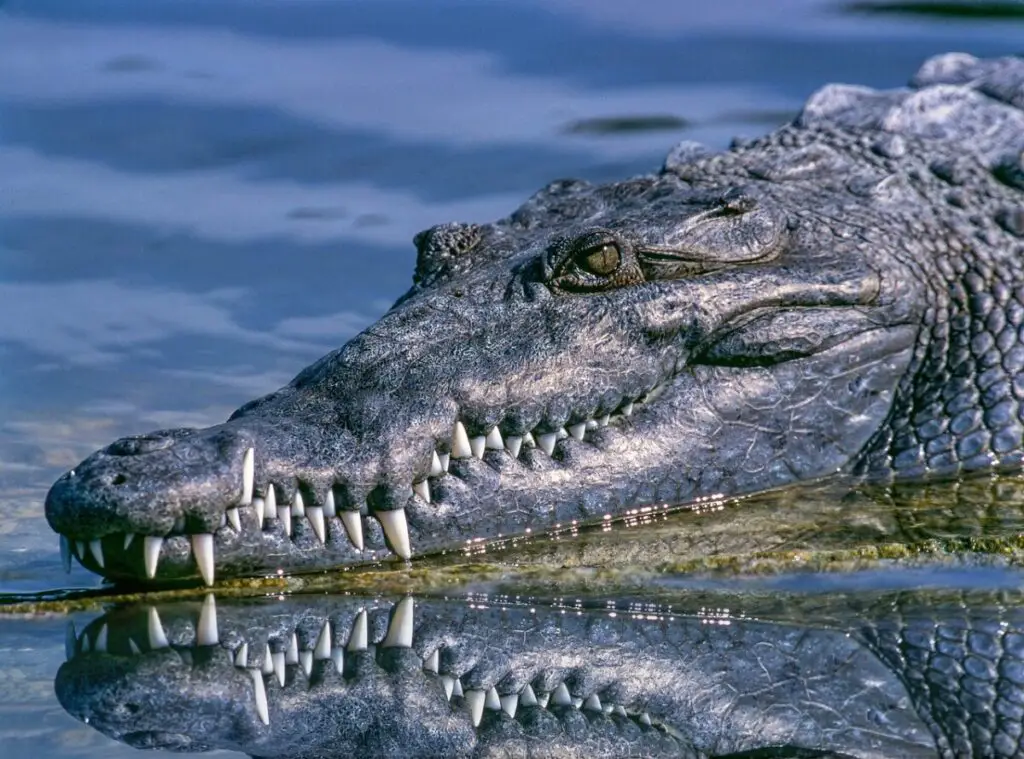
Crocodiles
Understanding Crocodile Ambushes is key to avoiding predation risks for African wild dogs. Crocodiles are notorious ambush predators, lying in wait just below the surface of water bodies with only their eyes and nostrils visible above the waterline. They can remain motionless for hours until a suitable prey item comes within striking distance. Once an opportunity presents itself, crocodiles use their powerful jaws to latch onto prey and drag them underwater to drown or crush them.
Avoiding Predation Risks from crocodiles requires an understanding of their behavior patterns. For example, it is important that African wild dogs avoid watering holes during peak crocodile activity times such as dusk and dawn when visibility is limited. Additionally, they should be cautious around areas where tall grass meets water because these places provide ideal hiding spots for crocodiles waiting for unsuspecting prey to approach. By being aware of these behaviors and adjusting their own movements accordingly, African wild dogs can reduce the risk of falling victim to a deadly crocodile ambush.
The Impact Of Predation On African Wild Dog Conservation
The African wild dog (Lycaon pictus) is a highly social carnivore that inhabits sub-Saharan Africa. These animals are known for their unique hunting techniques, where they work together to chase and bring down prey. Despite being apex predators in their ecosystems, African wild dogs face several threats from other species that share the same habitats.
Research findings show that one of the main predators of African wild dogs is the spotted hyena (Crocuta crocuta). Hyenas often compete with wild dogs for food sources and will attack them if given the opportunity. Lions (Panthera leo) also pose a significant threat to these animals as they can easily overpower them during confrontations or steal their kills. Other potential predators include leopards (Panthera pardus), cheetahs (Acinonyx jubatus), and Nile crocodiles (Crocodylus niloticus).
Understanding predation dynamics in African wild dog populations is crucial when developing conservation strategies aimed at protecting these endangered animals and their ecosystems.
Conservation efforts that focus on reducing human-wildlife conflict by creating protected areas may help mitigate some predatory pressures faced by African wild dogs. Additionally, controlling invasive species that alter natural predator-prey relationships could improve habitat quality and increase survival rates for both prey and predators alike.
Furthermore, educating local communities about practices like sustainable hunting could promote coexistence between people and wildlife while reducing conflicts over resources such as food or land use rights.
By understanding how predation affects African wild dog populations, we can develop effective conservation strategies to ensure their long-term survival in the wild.
Conclusion
The African wild dog, a highly social and endangered species, faces numerous threats in the wild. Predation is among the biggest challenges that these animals encounter, with lions being their main predator.
Hyenas and leopards also pose significant dangers to African wild dogs, while crocodiles can be deadly when they ambush them near water sources. Unfortunately, humans are another major threat to this species through hunting, habitat destruction, and diseases transmitted by domesticated animals.
Understanding the predators of African wild dogs is critical for conservation efforts aimed at protecting this vulnerable species. By mitigating human activities that harm these animals’ habitats and populations, we can help preserve their natural ecosystems.
Additionally, educating local communities on how to coexist peacefully with wildlife can reduce conflict between humans and African wild dogs. Ultimately, safeguarding this unique species requires concerted efforts from conservationists, governments, and individuals alike to address both direct and indirect threats to its survival.

